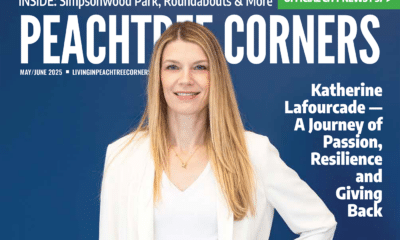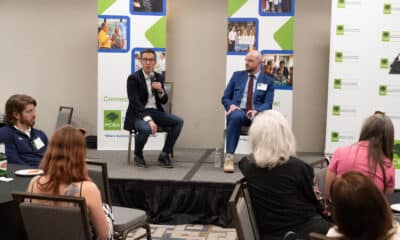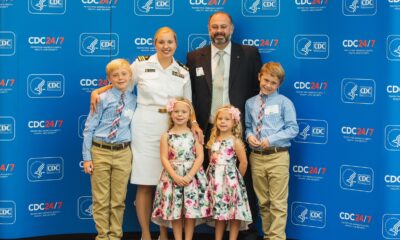Community
Norcross High School Foundation’s Annual Gala Set for April 21
Published
2 years agoon
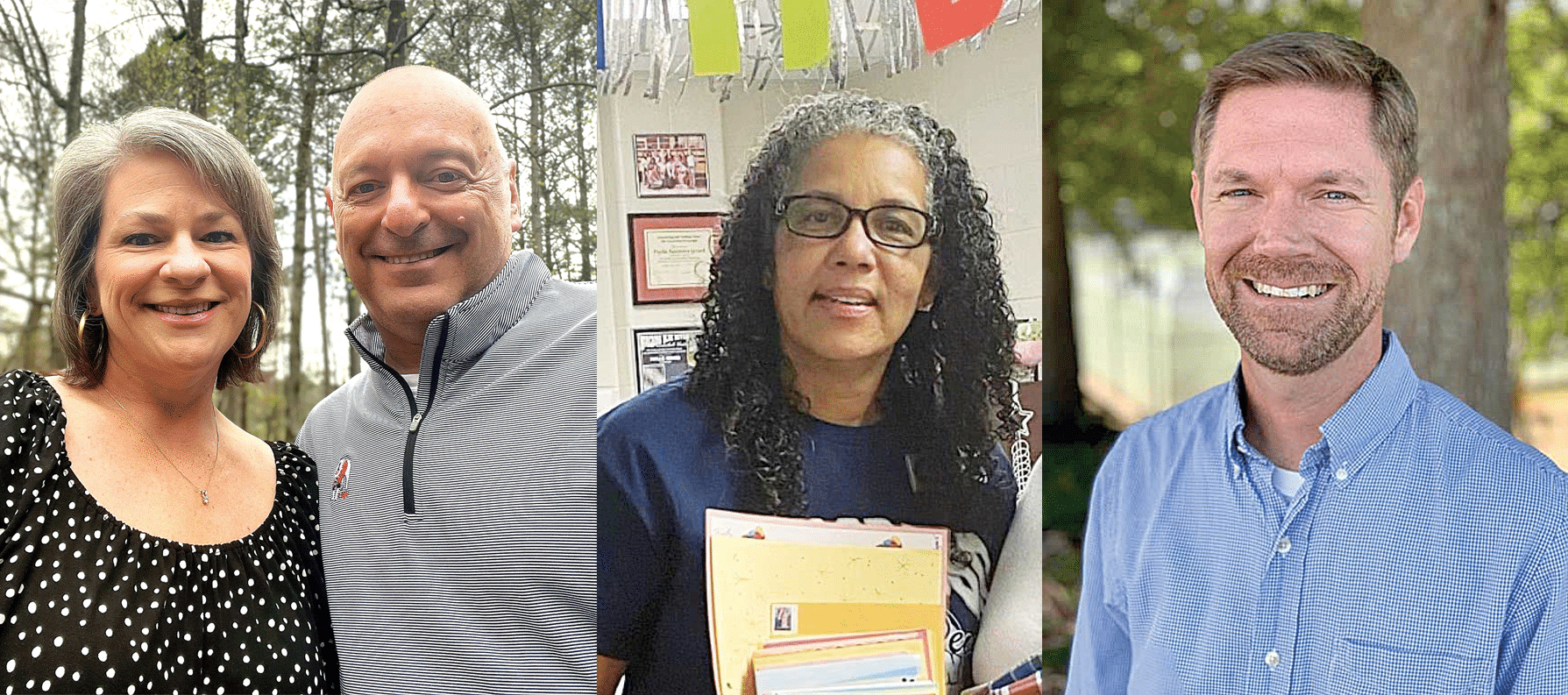
The 22-year-old nonprofit continues its commitment to student excellence.
The Norcross High School Foundation was started in 2001 by a group of parents who really wanted to make a difference in the community. As one of the longest running foundations in the county, the original goal of the grassroots organization was to make sure children have a good place to be after school. The founders realized that it would take money to make that happen and went about raising funds to enhance the education experience.
Today, the foundation has taken that mission further by working with teachers, coaches, advisors and volunteers. Although it may be confused with a booster organization, it doesn’t focus on a single sport or extracurricular activities. And it’s not in competition with the Parent Teacher Student Association – it actually tries to work in concert with that organization for student success.
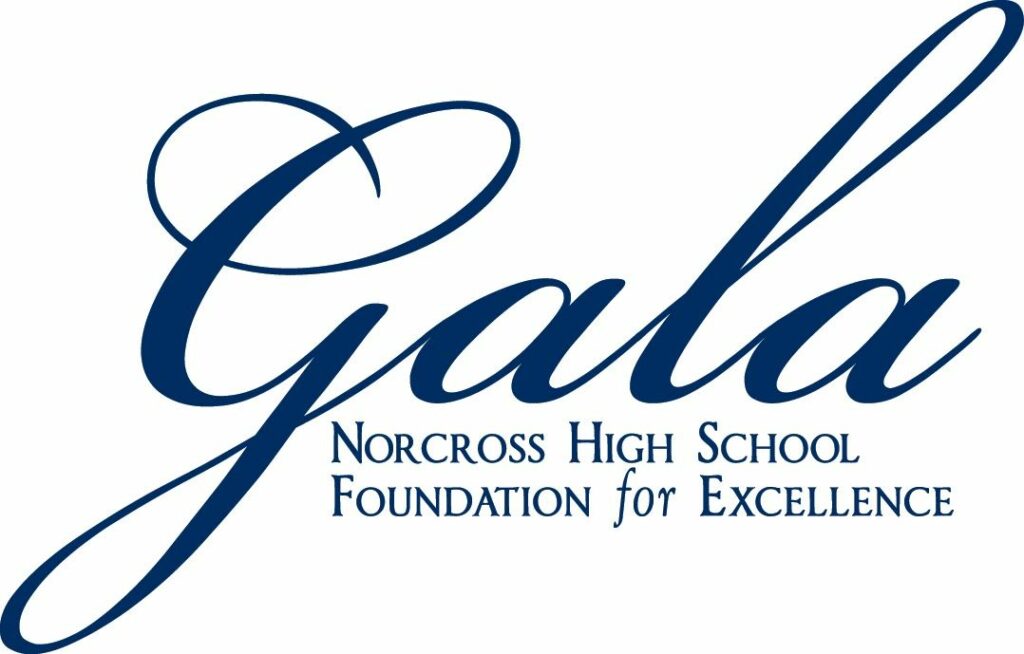
“Our mission, our vision, is that every student across high school will be prepared to excel in college, career and life. We ensure the success of students at Norcross High School by building community support and by raising funds to gain excellence in academics, arts and athletics,” said Tiffany Elner, co-president of the foundation.
“Not every student engages in athletics, not every student engages in art, so at a minimum by impacting academics, we are reaching every single student and that really was the goal was to take community resources from parents to bring in sponsorships and the business community,” she added.
With that mission in mind, the Norcross High School Foundation will host its annual gala on April 21 at Atlanta Tech Park.
The foundation wants its resources to impact all of the students, added Erin Griffin, also co-president of the foundation. With approximately 2700 students at the school, every dollar is needed.
The foundation raised $129,862 last school year, and since its inception has raised more than $2.6 million for Norcross High School (NHS). Close to half of that money – about $60,000 – was spent on classroom needs.
Every faculty member at NHS is asked to submit a list of things they need and want the foundation to raise money for.
“In the past, we had them on the wall like bricks, so they’ve just historically been called “wish bricks,” said Elner. “So basically, when someone purchases a brick at the gala, they’re funding this wish list item that whatever faculty member has submitted.”
There are items in every area of academics, arts and athletics. The requests also include counseling, fine arts and visual arts.
“With every single faculty member of the school involved, the giving touches every single classroom, every single activity, every sport that you can imagine,” Elner added.
Foundation funds at work
Last year the funds went to directly support 160 faculty-led endeavors. One example is gains for the After School Matters (ASM) program where students receive extra help in academics. These students now have a newly dedicated lab space in the Gwinnett Online Campus Lab at NHS.
After returning to a 100% in person program, ASM served 86 students. Each one of the 14 seniors enrolled in ASM were on track to graduate in May or June (after attending summer school).
In March 2022, 41% of the ASM students were failing three or more classes, but by May, that number decreased to 27%. In March, 6% of students were passing all classes, which increased to 13% of students passing all classes by finals in May.
Foundation bricks also funded the purchase of graphic design software and hardware tools for NHS graphic design students to create logos and marketing campaigns for hypothetical and real-world assignments.
NHS graphic design students and their teacher met with foundation board members to create new social media logos using the tools purchased by gala bricks for the Foundation’s Giving Tuesday campaign. The students’ work is featured on the Foundation website and in Foundation social media posts.
Other wish bricks provided entry fees for students to participate in clubs and competitions in academic areas like math, Mock Trial and National Honor Society. Students in the arts program benefited from brick purchases for home improvement materials to build drama sets, sheet music and practice tracks for chorus students, as well as specialized materials for fine arts.
In athletics, bricks provided scholarships for students to participate in cross country and track, swimming and wrestling and provided training equipment for every sport at NHS.
This year, the foundation is looking to update the electronic sign in front of the school.
“The matrix sign in front of the school is very old …and we can’t really get messages out to the community,” said Elner. “You can only get two short lines of text on it. You can’t really convey a lot of information as people are driving by.”
In addition to the Wish Bricks, the gala will have auction items such as a beach vacation and golfing experience. There will be smaller ticket items as well.
NHS Foundation for Excellence Gala
Atlanta Tech Park, 107 Technology Pkwy., Peachtree Corners
Friday, April 21
Tickets: $125
- Hall of Fall Induction Ceremony: 6:30 p.m.
- Gala Reception: 7-10 p.m.
- Live Auction: 8 p.m.
Hall of Fame
Another highlight of the Norcross High School Foundation gala is recognizing the contributions from individuals at the school and in the community towards student success.
“We are grateful for these people because our high school is a family in itself,” said Tiffany Elner. “Even after their children graduate, we have people who still come to games and give back to the school in so many ways.”
Many would say that you don’t see that type of dedication every day. “Norcross High School is such a special place that I think you do find people like that every day,” said Elner.
Carrie and Jed DeLong
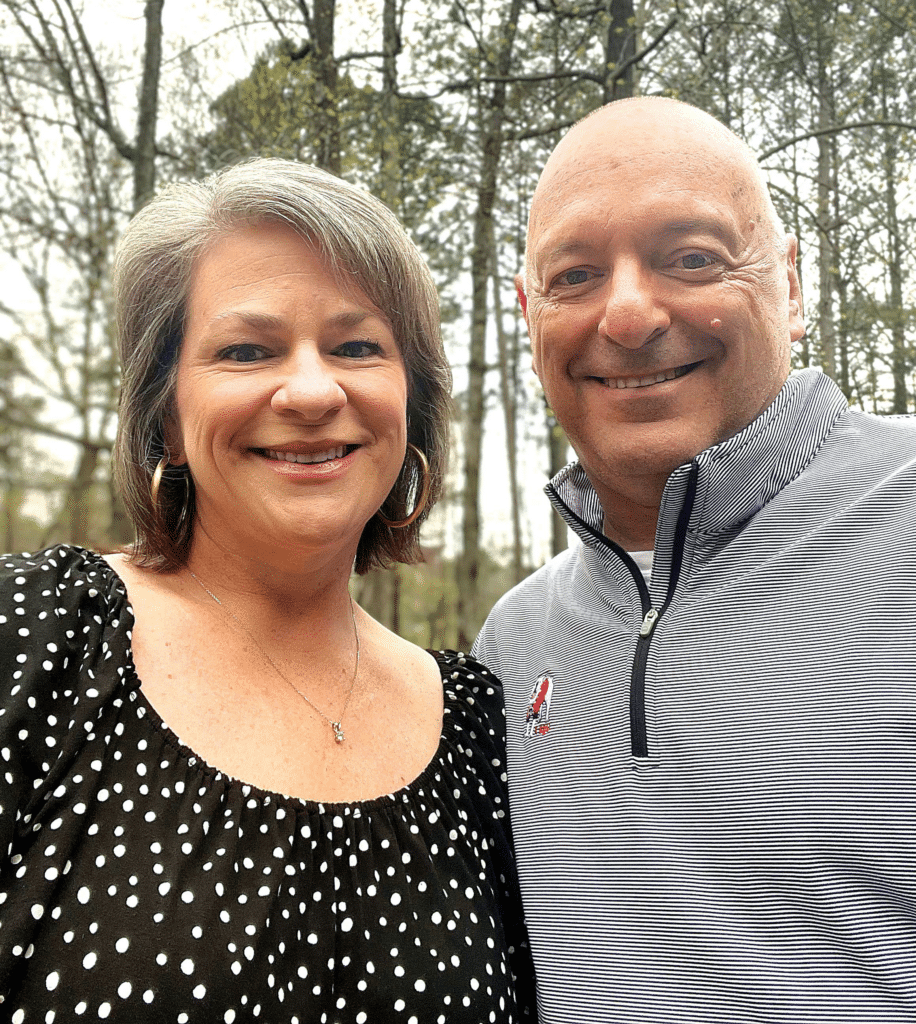
Atlanta natives Jed and Carrie DeLong have lived in Peachtree Corners for 22 years. They consider themselves proud graduates of local public schools and their youngest daughter, Remi, graduated from Norcross High School (NHS) in 2021.
The DeLongs feel strongly about supporting educators and investing in future generations. They began serving at Cornerstone Christian Academy in 2008 and served on the capital campaign committee and the parent teacher fellowship executive board.
They joined the board of NHS Foundation for Excellence in 2017 where Jed served on the investment committee and Carrie served as co-president. The couple have supported many facets of Norcross High life including cheerleading, football, baseball, soccer and are especially proud of the creation of the sensory room for the special education department.
In addition to supporting NHS, Jed has volunteered with the City of Peachtree Corners as a member of the zoning board of appeals and has served as president of their neighborhood HOA.
Carry and Jed DeLong are longtime supporters of NHS and the community. Although all three of their children have graduated, they are still active with the foundation and help every year.
Dr. Phyllis Alexandra Gerard
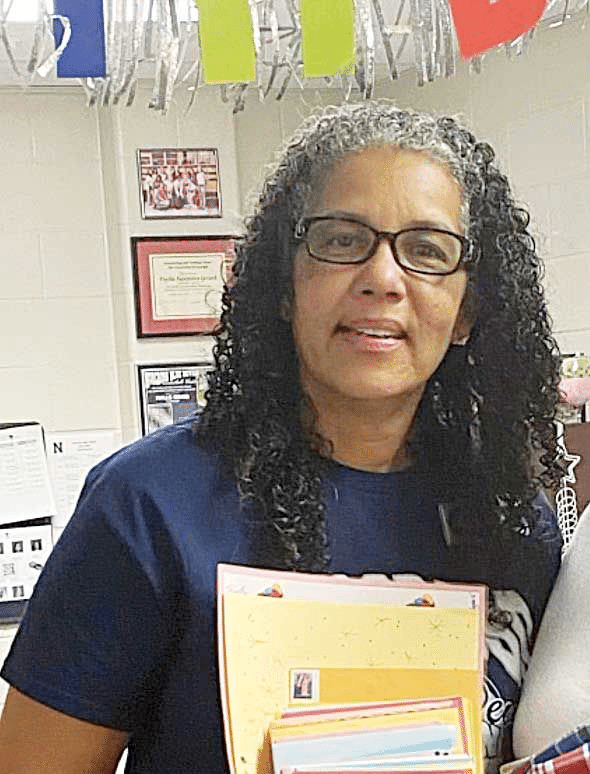
Dr. Phyllis Gerard was born 60 years ago on the small island of St. Croix in the U.S. Virgin Islands. She is the youngest of four children and proud of her Afro-Caribbean Latin American heritage. Dr. Gerard made her way to Bradley University in Peoria, Ill.
There she met her lifetime mentor, Dr. Richard L. Hayes, a motivating force and staunch supporter as she pursued her bachelor’s degree in psychology and master’s degree in community counseling. Dr. Gerard found employment in a counseling position at a school-based medical clinic in Chicago. Richard T. Crane High School, located on the west side of Chicago, taught her critical lessons about serving students with a myriad of needs.
Dr. Gerard pursued a Ph.D. in counseling psychology at the University of Georgia. Dr. Hayes served as her major professor and influenced her desire to pursue a career in education. In 1998, while being interviewed by Dr. Francis Davis on the UGA campus, she was offered a position in a high school setting in Gwinnett County.
During the interview at the old Norcross School building on Beaver Ruin Road, high school principal Judy Rogers asked Dr. Gerard to commit to remaining at Norcross for five years. She agreed, and the rest is history.
Dr. Gerard has now served at NHS for 25 years in the counseling department and contends that this group of colleagues are by far the best group she has had worked with. She admits it is often difficult, but the work is incredibly rewarding. She calls her kids her “babies” or her “peoples” and delights in making them smile.
Dr. Gerard’s daily task is to help students make better choices as they weather their own personal storms while identifying future paths that will lead to successful educational and/or career choices.
Elner had high praise for Dr. Gerard and her dedication. “She is just an incredible counselor at our school, but she’s so much more than that,” said Elner. “She has such a heart for our students in her community and she has been so devoted to it. …People who aren’t even enrolled yet, who are just interested, she treats them like they are family because of how she sees them.”
Lee Newman
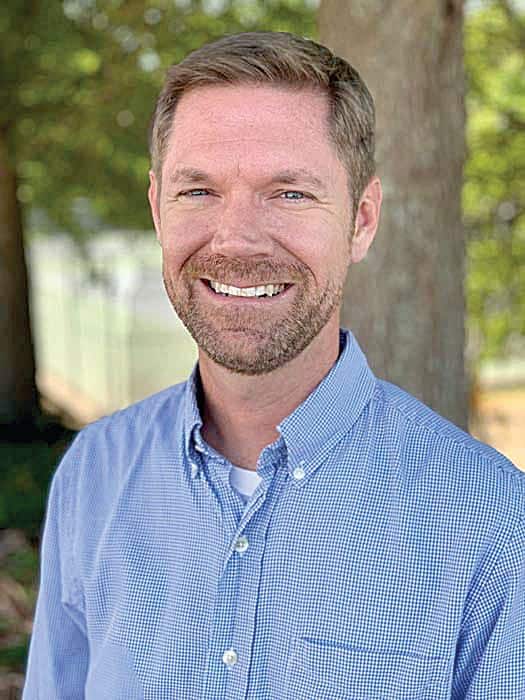
Lee Newman has served as the director of bands at Norcross High School since 2011. His duties include directing the Wind Symphony, Symphonic Band, Jazz Band, Blue Devil Marching Band, brass studies and leadership as well as teaching International Baccalaureate music classes.
During his time at Norcross, Newman has continued a proud tradition of excellence. His ensembles have been invited to perform at the Georgia State Honor Bands of Distinction in 2013, 64th Annual UGA January Music Festival in 2014, the 2015, 2018, and 2020 Music for All Southeastern Regional Concert festival, the 2018 and 2020 Yamaha National Concert Festival, and the 2021 and 2022 Georgia Music Educators In- Service Conference.
Newman has served in multiple leadership roles, including NHS Fine Arts Department Chair, Gwinnett County High School Band Co Lead Teacher, District 13 Band Chair and District 13 Chair. He was also named the Norcross High School Teacher of the Year for the 2019-2020 school year.
“He has impacted so many students,” said Elner. “It’s just neat to think that his children have grown up in the community and now he has one of his children as a student. …He does such a good job of engaging every single student in his program.”
Related
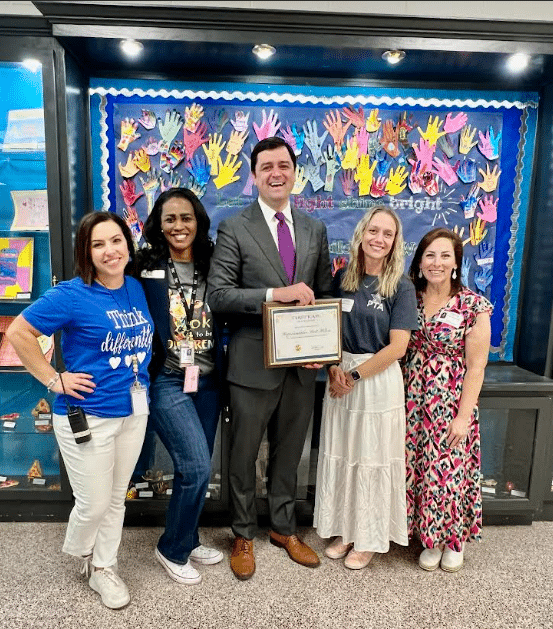
Simpson Elementary School celebrated Exceptional Children’s Week (ECW) last month with five days of special activities to recognize their special needs population and all of their exceptional students.
April 14–18 is set aside each year to celebrate children with disabilities, gifts and talents. This year’s ECW theme was Bridging Gaps and Building Futures, and the school was happy to take part.
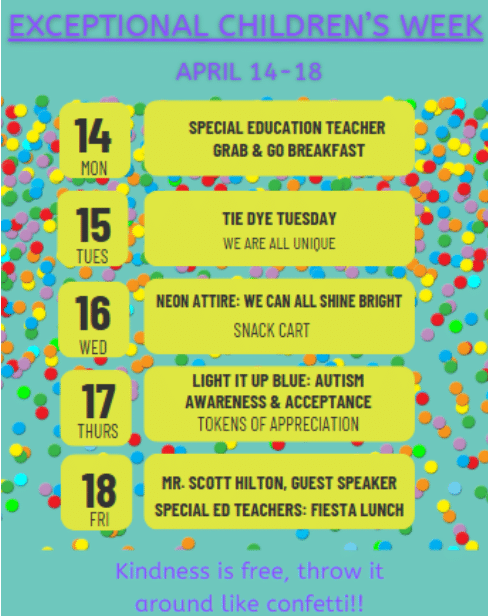
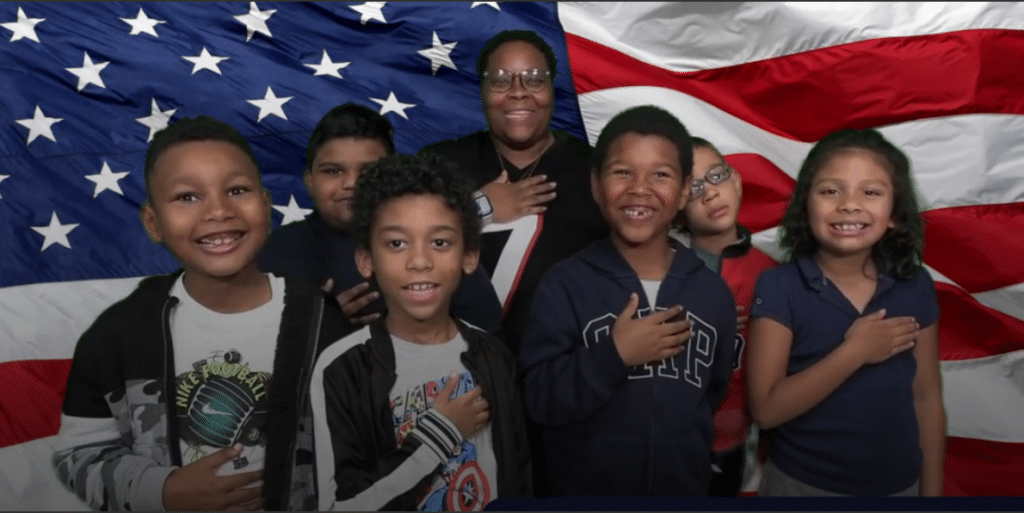
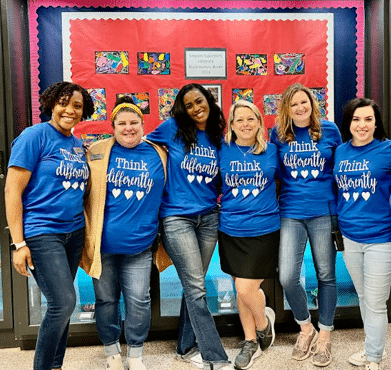
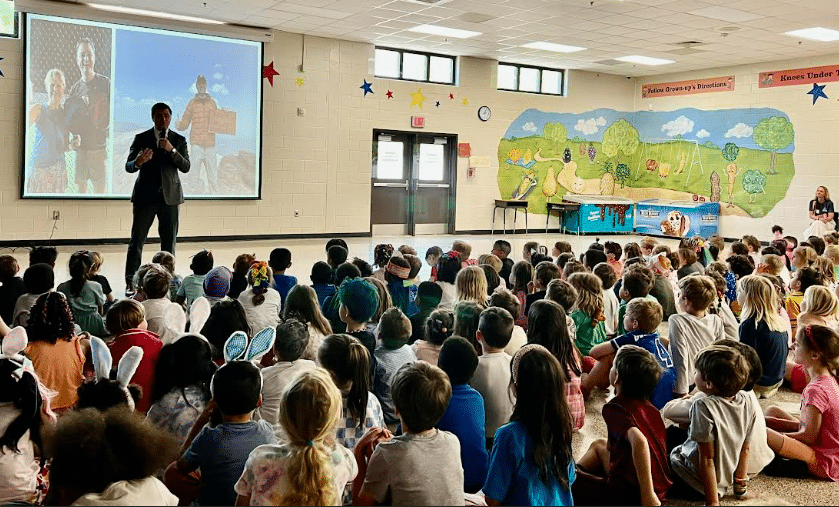
They highlighted each day of the week on the morning news with fun facts about notable people in society — and throughout history — who have overcome challenges with their disabilities, including actor Daniel Radcliffe (who has lived with dyspraxia for his entire life), Tom Cruise, Whoopi Goldberg, Frida Kahlo and Helen Keller.
Simpson Elementary’s technology team also pre-recorded various special needs classes reciting the Pledge of Allegiance every day of the week.
Guest speaker
To end their ECW with a bang, they invited former Simpson Elementary parent, State Representative Scott Hilton, to come in and speak to their K-2 classes about raising his son, Chase (who is autistic and now a student at Norcross High School), and how being different is okay.
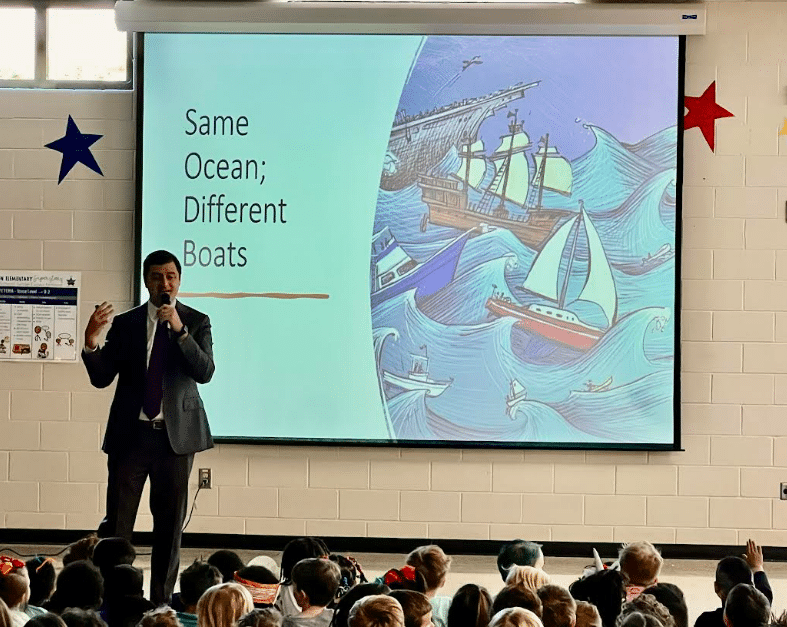
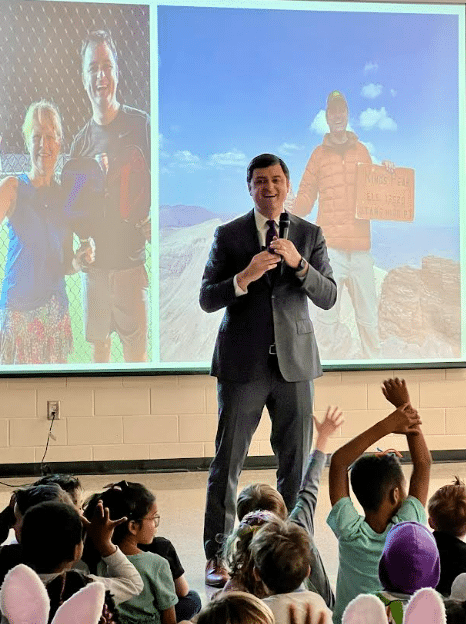
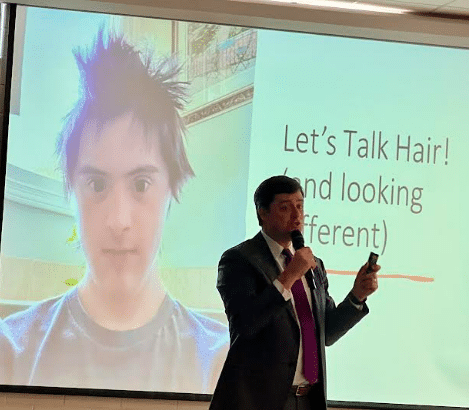
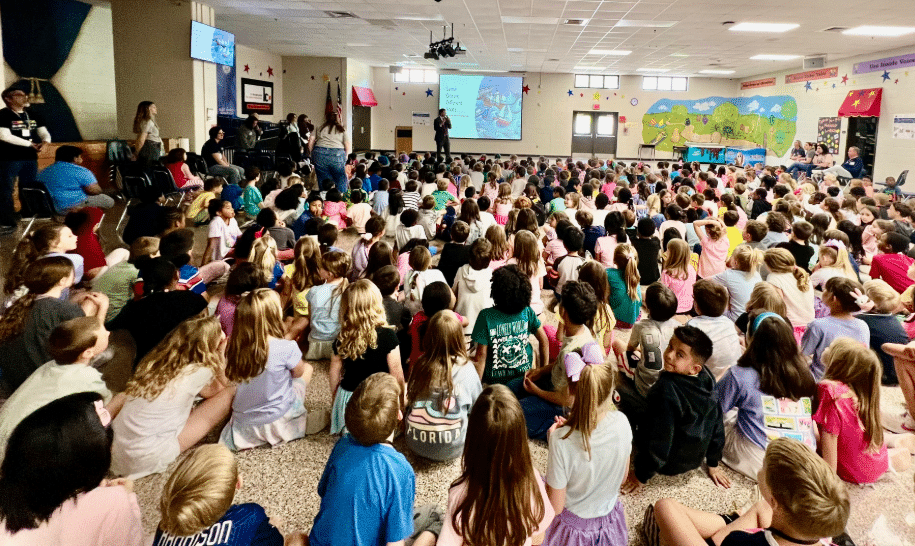
“Showing kindness and being inclusive is the best version of humanity,” said Dr. Taffeta Connery, Simpson Elementary School principal, in a statement about the event.
“Simpson Elementary has a special needs population of 214 (23%) of 946 students. [And] … we strive to ensure that our students are valued, recognized and instilled with high expectations for all.”
For more about Simpson Elementary, visit simpsones.gcpsk12.org.
Related
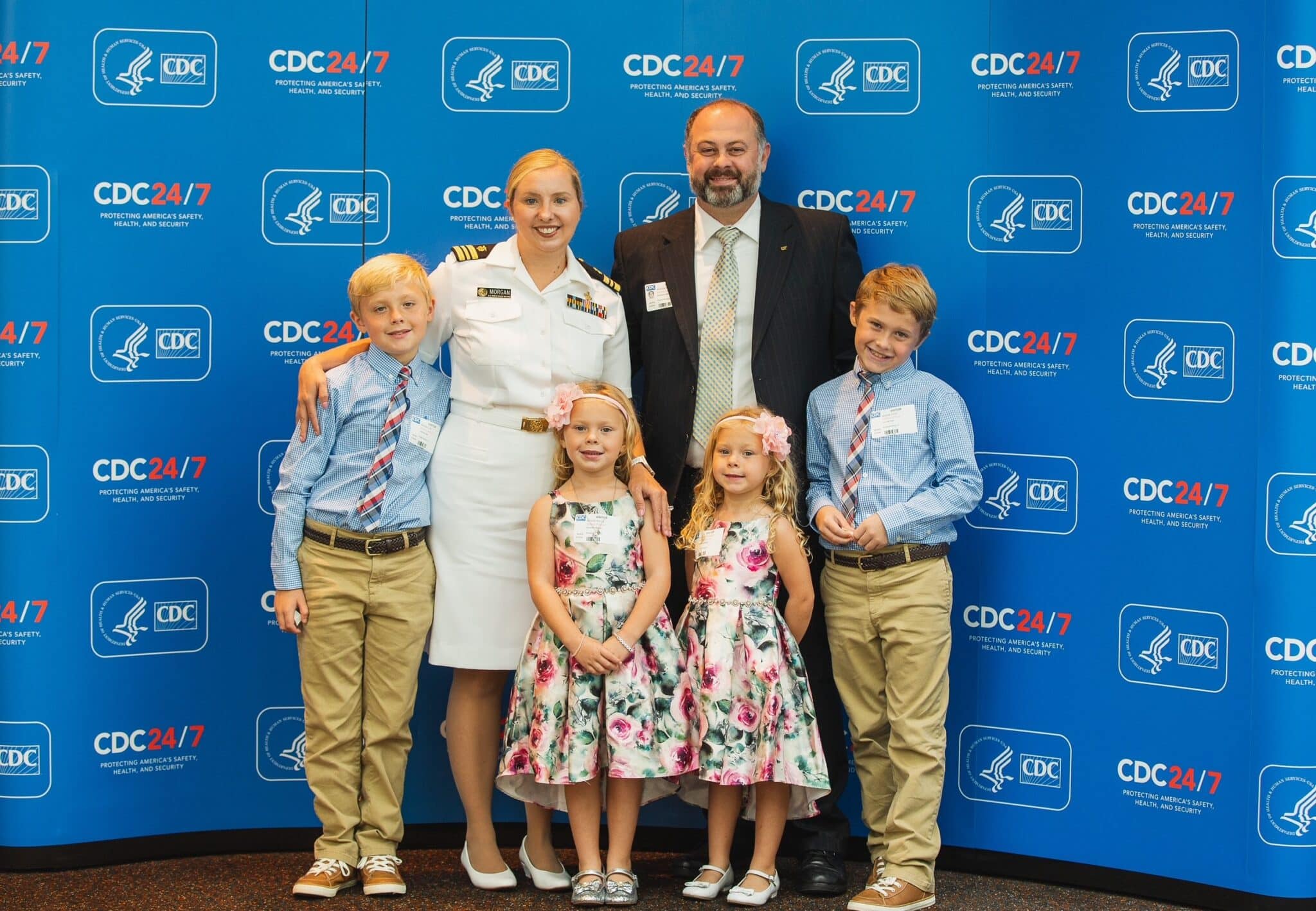
Motherhood comes with a lot of moving parts. For these Peachtree Corners moms, it also means leading teams, building careers and keeping the family schedule running. Most days, all at once.
This Mother’s Day, we’re spotlighting seven women in our community who are doing just that. They’re professionals in full-time leadership roles, showing up to strategy meetings by day and soccer games by night. They’re problem-solvers, planners, caregivers and coaches.
What connects them most isn’t just what they do, it’s how they do it. With intention. With humor. With support from partners, parents, friends and neighbors. And with a deep appreciation for the community they’ve built in Peachtree Corners.
Through their stories, we celebrate more than titles and to-do lists. We honor the quiet, constant work of showing up.
Tracy Lee
Tracy Lee leads with heart and vision as CEO of This Dot Labs, a software consultancy focused on helping businesses solve complex challenges through technology. Her engineering leaders collaborate with major clients like Stripe, DocuSign, Google, Wikipedia and Roblox. She’s passionate about her work.
“I love the mix of problem-solving and people leadership and knowing the work we do can make a real-world impact,” she said.
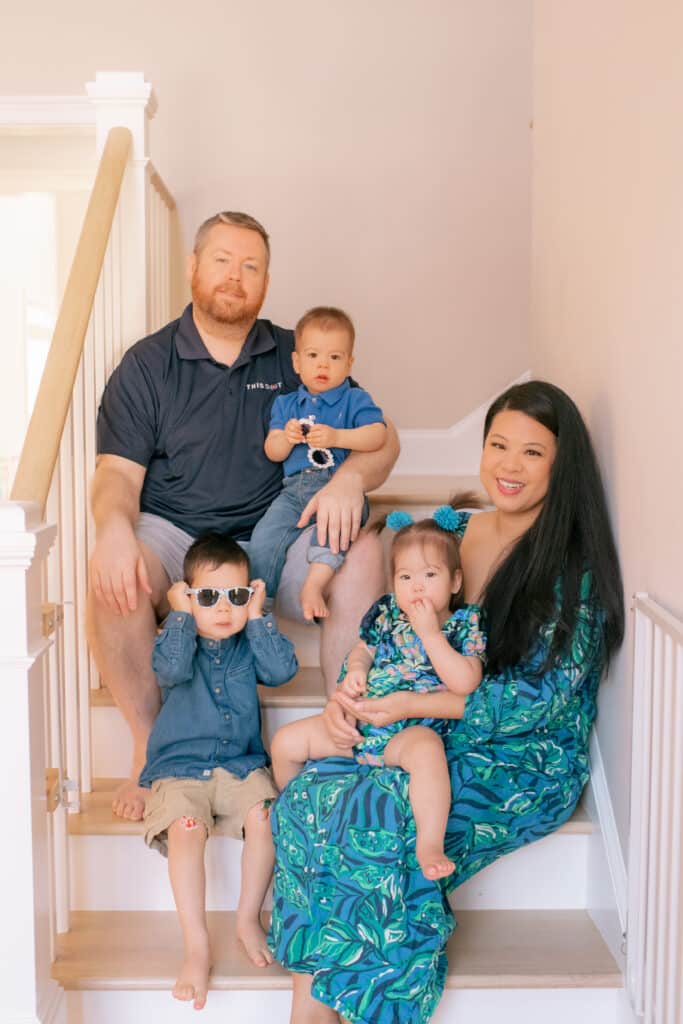
Tracy brings that same intentionality to her life at home, where she and her husband, Elliott Fouts, are raising three young children: William, 3, and twins Angelina and Marcus, who are 1.5. Despite the busy pace, Tracy is committed to being present in every role she plays.
“I have three full-time nannies and two part-time nannies, as well as girls around the neighborhood who are mama’s helpers to manage the chaos! With the help, we are able to do more and enjoy more time with our kids,” she said. “I try to be fully present, whether I’m in a meeting or building block towers in the living room. It’s never perfect, but we focus on what matters most in the moment.”
Tracy credits her support system for making it all possible. “I have an incredible partner and a strong support system between our nannies, friends and local community,” she said. “We have a local moms group for Asian moms called Georgia Asian Moms, and there are so many moms just in our neighborhood. It’s really great.”
Peachtree Corners has become a meaningful home base for the family. “We absolutely love it here,” she said. “There’s amazing programming for kids at The Forum every Tuesday in the spring and summer. It’s such a gem for young families.”
Weekends often include time outside and community adventures. “Sometimes the best hack is just piling everyone in the wagon and heading out for fresh air!” she said.
Tracy leans on a strong partner, a tight-knit group of friends and a local moms network. “It really takes a village,” she shared. “And I feel lucky to have one.”
Melissa Nicholson
Melissa Nicholson knows what it means to lead with heart and precision. As division vice president of program management & international solutions at Aya Healthcare, she helps internationally educated healthcare professionals enter the U.S. workforce.
“What I enjoy most is the opportunity to support these professionals in achieving their American dream,” she said. “While also contributing to improved patient outcomes across the country.”
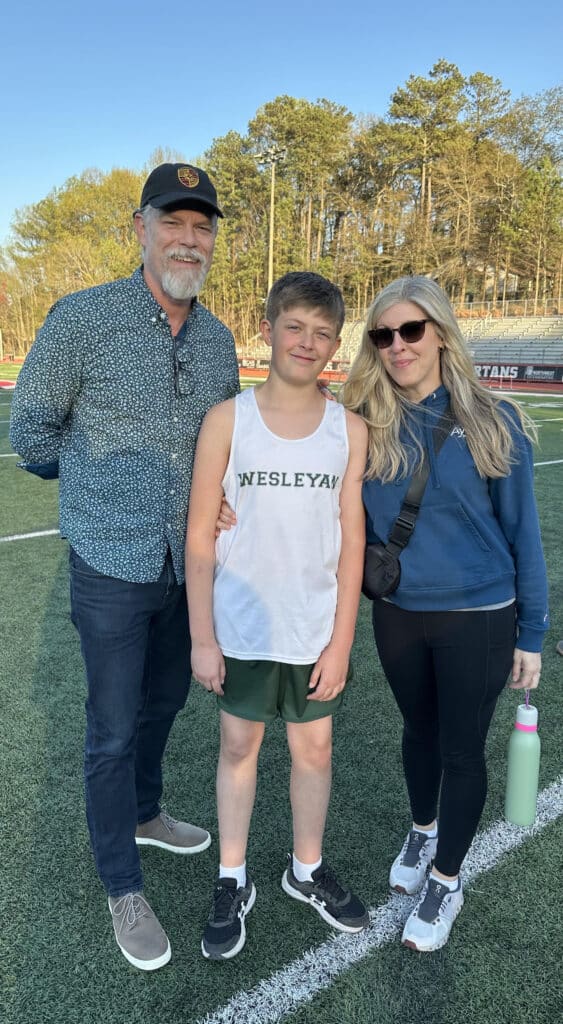
Melissa and her husband Greg recently celebrated 15 years of marriage. Their 12-year-old son, Luke, and a cat named Charlie bring a fun, loving dynamic of their own into the family. After relocating from East Atlanta a decade ago, they quickly embraced the Peachtree Corners community.
“It’s the people who make this community so special,” she said. “We’re truly grateful to count our neighbors as friends.”
Balancing an executive role with family life takes clarity and commitment. “I have to be very intentional with my time,” Melissa shared. She sets boundaries at work and makes sure her team knows when she’s off the clock for important family moments.
Wellness is a key part of her rhythm. “I recently started working out at Orangetheory Fitness,” she said. “I’ve noticed a significant boost in both energy and focus.” Sundays are for church and reflection.
When she travels for work, Greg holds it down at home. “We rely on each other to keep life running smoothly,” she said. “I’m grateful every day for that kind of partnership.”
On weekends, Melissa prioritizes quality time. Whether that’s a hike, pool day or baking something from scratch. “We’ve learned that if we don’t prioritize those moments, the weekends can quickly get taken over.”
Diva Hicks
For Diva Hicks, work isn’t just a job, it’s personal. As creative senior manager at CURE Childhood Cancer, her mission runs deep.
“At 12 years old, my sister was diagnosed with cancer,” she said. “CURE, in its early days, was a resource for my family.”

Her sister survived and now thrives. That experience shaped Diva’s career and continues to inspire her today. “This is my opportunity to give back to CURE for what it did for my family,” she said. “It’s rare to find a place where your purpose and passions collide.”
CURE also welcomes her whole family into the fold. “I get to bring my kids to events all the time,” she said. “They love feeling like they are a part of my work.”
Diva lives in Peachtree Corners with her husband John, their children Adair, 8, and Tripp, 6, and two golden doodles. “There is a sense of community here that I think is special,” she said.
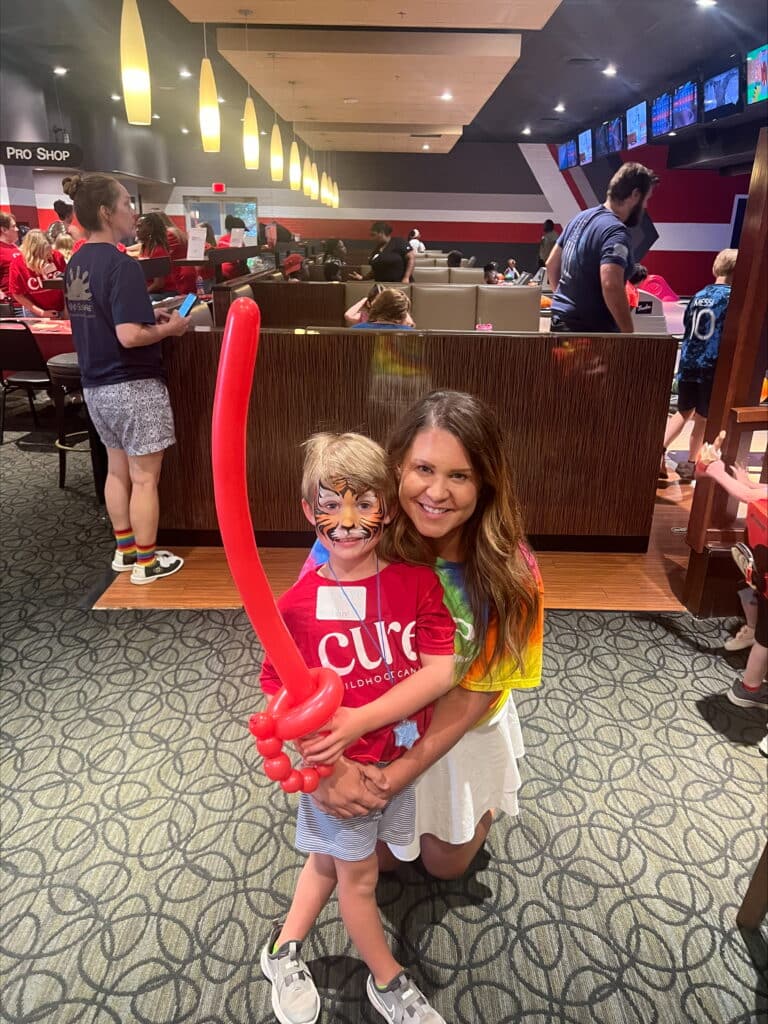
Balance is a daily effort. “John and I have tackled who helps with homework and on what days,” she said. “I would not be able to be the mom that I am without my village.”
She leads school committees and never misses events. “Is it easy? No,” she said. “But I honestly say, it’s not easy for any parent.”
Diva’s motivation is clear. “I want Adair to look at me and see that she can be a mom and have a career too.”
The family stays grounded with tennis weekends and careful planning. “We live by our calendar,” she said. “The more prepared I am, the easier life is.”
Kate Martin
Kate Martin knows how to bring structure to busy systems. As senior director of financial planning and analysis at Alloy Roofing, she finds energy in collaboration and clear strategy.
“In this role, I work closely with various teams across the business,” she said. “It supports the company’s strategy and performance.”
Kate and her husband, Nathan, are raising two children, 14-year-old Elliot and 10-year-old Evan, in Peachtree Corners. After ten years in the area, she credits the people for making it feel like home. “Life wouldn’t be the same without the relationships we’ve built here,” she said.

Balance starts with planning. “We keep a central Google calendar synced with all the family commitments that we review daily,” she said. “On Sundays we write on the kitchen boards.” Their chalkboard becomes the weekly roadmap, from meals to responsibilities.
“Seeing things laid out visually keeps me from overcommitting,” she added.
The family stays grounded by recognizing progress. “What keeps me motivated is celebrating both the big and small wins together,” she shared. “Sometimes, making it through the week is a victory in itself.”
Kate relies on a strong network. “We are very fortunate to have my parents nearby,” she said. “I also have an amazing network of women here in Peachtree Corners that I rely on.”
Her favorite hack? “An app Nathan created to help manage our calendars,” she said. “He created a solution to integrate these webcal subscriptions into a central subscription hub.” It’s called Skedj, and they’re piloting it now. “If you know this struggle and want to help us pilot the app, check out skedj.co!”
Linda Luna
As vice president at RSUI, Linda Luna manages risk while empowering people. She leads a team of underwriters who handle professional liability and cyber insurance. “I really enjoy my job because of its dynamic nature and the opportunity to help people in meaningful ways,” she said.
Whether she’s mentoring her team or protecting clients’ businesses, Linda finds value in impact. “It’s rewarding to know that my work has a positive impact on both my colleagues and our clients.”

She and her husband, Ruben, are raising their two children, Dawson, 10, and Ava, 6, in Peachtree Corners. Her parents, though not under the same roof, are a constant part of daily life. “They help keep things running smoothly on the home front,” she said.
After nine years in the community, Linda has grown to love its blend of charm and convenience. “There is always something to do,” she said. “Whether it’s grabbing a bite at Ted’s or spending time with friends at Town Center.”
Balance comes from structure. “By establishing a solid schedule and sticking to it, I can ensure that my work commitments are met,” she said. “Being fully present allows me to strengthen my connection with my loved ones.”
When things get busy, she takes a practical approach. “Breaking it down into smaller, manageable tasks makes it much more approachable,” she said. “I remind myself to keep the bigger picture in mind and not sweat the small stuff.”
Linda’s support system is strong. “It truly takes a village, and I’m so grateful for mine,” she said. The family’s favorite tradition? A beach trip to 30A every May. “It’s our way of unwinding, reconnecting and making lasting memories together.”
Allison Blasetti
Allison Blasetti holds a national leadership role at Transamerica in the employee benefits division — a position that constantly challenges and motivates her. “What I enjoy most is the opportunity to use my talents to help my team,” she said. “I’m always growing and learning.”
She and her husband, John, are raising daughters Annie Mae, 8, and Olive, 6, in Peachtree Corners, where they’ve built strong ties in the community. “The amenities in our city provide many opportunities to run into friends around town or plan meet-ups,” she said.

Allison works from home and prioritizes clear boundaries. “I turn off my app notifications because it quickly pulls me back in to work,” she said. “I also have a dedicated workspace in my house where I can leave at the end of the workday.”
She’s developed the habit of resetting her mindset, as well. “I quickly recognize [when] I’m mentally ‘at work’ and actively redirect my thoughts back to being in the present moment.”
Allison’s mornings begin at Burn Bootcamp, where she finds motivation and connection. “Spending an hour with my Burn community helps me get grounded for the day,” she said.
To stay organized, she and her husband use a shared family calendar. Her mom steps in often, especially when work travel ramps up. “I really don’t know what we would do without her.”
On weekends, Allison coaches Olive’s soccer team with the Peachtree Corners Football Club. “It brings me so much joy to be outside, see my soccer friends and watch my girls have fun,” she said. “Coaching makes it even better because I get to support the community that means a lot to me.”
Samantha Morgan
Samantha Morgan is a commander in the U.S. Public Health Service, currently assigned to the Centers for Disease Control and Prevention. Over her career, she’s responded to major public health threats, including Ebola, Zika and COVID-19. Today, her work centers on injury prevention, with a focus on issues like suicide, drowning and traumatic brain injury.
“What I enjoy most is being part of CDC’s mission to save lives and protect people,” she said. “I’m proud to contribute to work that makes a tangible difference in communities across the country.”
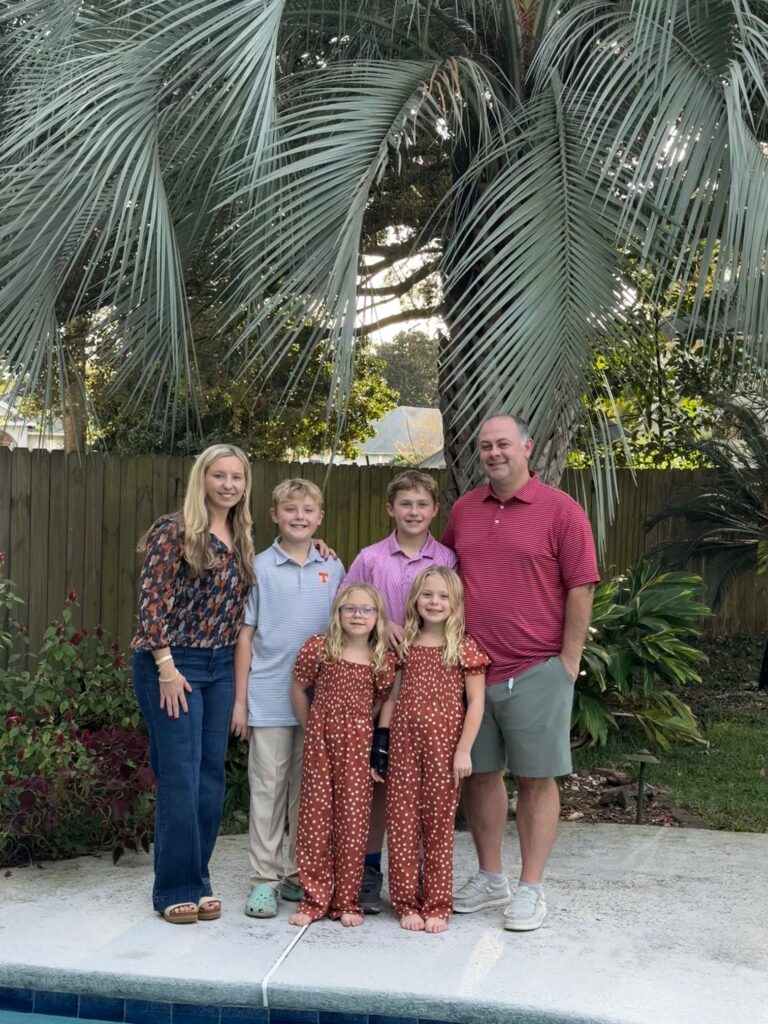
At home in Peachtree Corners, Samantha and her husband, Brian, are raising two sets of twins. Luke and Elliot are 12-years-old and love baseball, golf, basketball and band. Charlotte and Noelle are 8-years-old and enjoy piano, tumbling and tennis. “Life with four kids is wonderfully busy,” she said. “I often joke that I’m an unpaid Uber driver!”
After more than a decade in the neighborhood, Samantha credits their support system for helping them manage the day-to-day. “Our neighbors and friends — our village — have supported us through the hardest moments and celebrated life’s greatest joys with us,” she said.
Structure is key to keeping things on track. “We live and breathe by our family calendar,” she said. “Shared schedules, group texts and carpooling help us keep things running.”
Her children remain Samantha’s biggest motivators. “They know, ‘mom’s going to work to help make the world a safer place,’” she said.
The family also leans on routines and simple joys. “Checklists are my go-to mom hack,” she shared. One of their favorite traditions is make-your-own-pizza night. “It’s messy, silly and something we all genuinely look forward to.”
The seven women featured here offer a glimpse into the lives of working moms in Peachtree Corners. Each one balances career, family and community with care and intention. They are just a few of the many women — both working and stay-at-home — who nurture, organize and uplift the people around them every day.
Whether leading teams or guiding their children, mothers across this community show up with strength, love and quiet determination.
You’ll find this story in the May/June issue of Peachtree Corners Magazine, available in print and digital edition.
Related
City of Peachtree Corners
Official City Merchandise Line Debuts This Saturday at Town Green
Published
2 days agoon
May 6, 2025
This Saturday, May 10, residents and visitors are invited to experience the debut of Peachtree Corners’ official merchandise collection at the Town Green. The pop-up shop will be open all day, beginning at 8 a.m., located directly behind the former Jinbei restaurant.
This pop-up shop is provided through a pilot program with Vox-pop-uli and the City of Peachtree Corners.

“We’re thrilled to showcase our city’s spirit through this exciting new merchandise line,” said Louis Svehla, City of Peachtree Corners director of communications. “There’s something for everyone, whether you’re a proud local or just visiting. We are excited about testing this pilot program to raise funds for continued improvements at Town Green and events.”
Featured items include:
- brand new concert-themed apparel
- city-branded merchandise
- limited edition collectibles
- perfect Mother’s Day gift selections
With Mother’s Day approaching, shoppers will find unique, locally inspired gifts guaranteed to delight mom with something she doesn’t already own.

Visitors can browse and purchase items throughout the day, with friendly staff available to assist with selections.
Event details
Date: Saturday, May 10
Time: Starting at 8 a.m.
Location: Town Green (behind former Jinbei location)
Payment methods accepted: Cash and credit card accepted
Related
Read the Digital Edition
Subscribe
Keep Up With Peachtree Corners News
Join our mailing list to receive the latest news and updates from our team.
You have Successfully Subscribed!

GA Tech Launches First-of-its-Kind GT Atrium in Peachtree Corners

Katherine Lafourcade — A Journey of Passion, Resilience and Giving Back

Digital Edition

PCBA Announces 2025 Scholarship Winner

Paul Duke STEM High School Student Earns CGO Scholarship

World Blood Donor Day Starts Here: Theo’s Miracle, Katherine’s Mission [Podcast]

Peachtree Corners Grows Business Opportunities Through Economic Development

Executive Function: A Tribute to Working Moms

Simpson Elementary Marks Exceptional Children’s Week

Executive Function: A Tribute to Working Moms

Official City Merchandise Line Debuts This Saturday at Town Green

Peachtree Corners Grows Business Opportunities Through Economic Development

Digital Edition

World Blood Donor Day Starts Here: Theo’s Miracle, Katherine’s Mission [Podcast]

Paul Duke STEM High School Student Earns CGO Scholarship

PCBA Announces 2025 Scholarship Winner

Light up the Corners [Video]

Capitalist Sage: Business Leadership in Your Community [Podcast]

Cliff Bramble: A Culinary Adventure through Italy

Top 10 Brunch Places in Gwinnett County

A Hunger for Hospitality

THE CORNERS EPISODE 3 – BLAXICAN PART 1

Top 10 Indoor Things To Do This Winter

The ED Hour: What it takes to Remove Barriers from Education

Peachtree Corners Life
Topics and Categories
Trending
-
Digital Edition4 days ago
Digital Edition
-
Podcast4 days ago
World Blood Donor Day Starts Here: Theo’s Miracle, Katherine’s Mission [Podcast]
-
Business2 days ago
Peachtree Corners Grows Business Opportunities Through Economic Development
-
Community2 days ago
Executive Function: A Tribute to Working Moms





